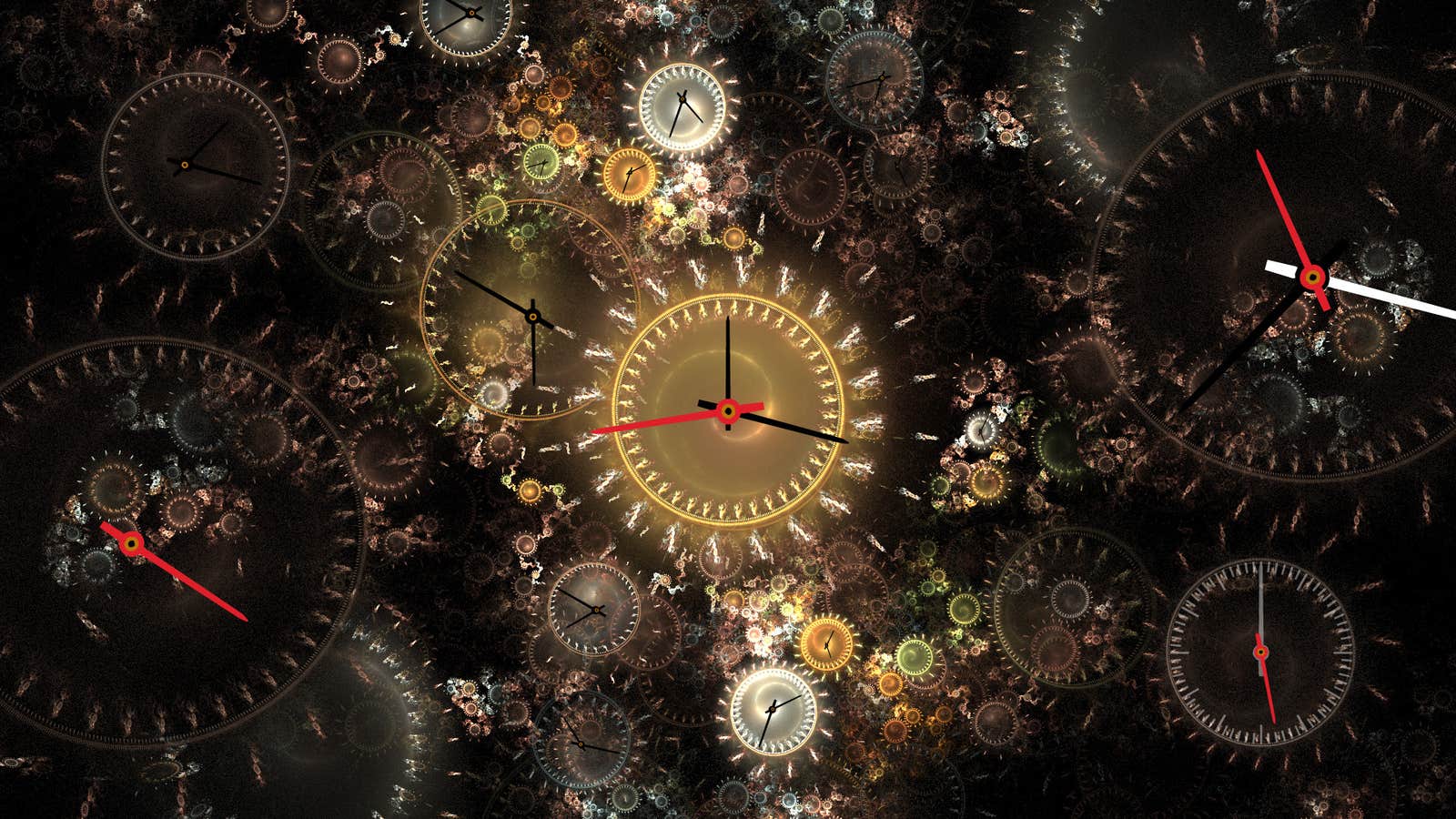
The hard part is understanding matter and time and the fact that empirical infinity is not just a large number, but that its inverse is not zero. this leads to an act of creation that is the SPACE TIME pendulum whose action induces further acts of creation in an expanding sphere of creation of finite separate particles.
All that is good enough to produce the observed data of astronomy.
Yet photons are finite unbounded devices like a mobius strip clearly separate from the idea of particle or the SPACE TIME pendulum. does that carry consciousness?
Consciousness relies on TIME in order to observe all this. does the act of creation lead to the rise of consciousnesses and thus the act of creation? mobius strip time again. Is the I Ching symbol a representation of a 3D extension of the Mobius Strip?
Forget Everything You Think You Know About Time
A theoretical physicist challenges our common notions about the fourth dimension.
BY BRIAN GALLAGHER
August 27, 2018
https://nautil.us/forget-everything-you-think-you-know-about-time-237182/
In April, in the famous Faraday Theatre at the Royal Institution in London, Carlo Rovelli gave an hour-long lecture on the nature of time. A red thread spanned the stage, a metaphor for the Italian theoretical physicist’s subject. “Time is a long line,” he said. To the left lies the past—the dinosaurs, the big bang—and to the right, the future—the unknown. “We’re sort of here,” he said, hanging a carabiner on it, as a marker for the present.
Then he flipped the script. “I’m going to tell you that time is not like that,” he explained.
Rovelli went on to challenge our common-sense notion of time, starting with the idea that it ticks everywhere at a uniform rate. In fact, clocks tick slower when they are in a stronger gravitational field. When you move nearby clocks showing the same time into different fields—one in space, the other on Earth, say—and then bring them back together again, they will show different times. “It’s a fact,” Rovelli said, and it means “your head is older than your feet.” Also a non-starter is any shared sense of “now.” We don’t really share the present moment with anyone. “If I look at you, I see you now—well, but not really, because light takes time to come from you to me,” he said. “So I see you sort of a little bit in the past.” As a result, “now” means nothing beyond the temporal bubble “in which we can disregard the time it takes light to go back and forth.”
Rovelli turned next to the idea that time flows in only one direction, from past to future. Unlike general relativity, quantum mechanics, and particle physics, thermodynamics embeds a direction of time. Its second law states that the total entropy, or disorder, in an isolated system never decreases over time. Yet this doesn’t mean that our conventional notion of time is on any firmer grounding, Rovelli said. Entropy, or disorder, is subjective: “Order is in the eye of the person who looks.” In other words the distinction between past and future, the growth of entropy over time, depends on a macroscopic effect—“the way we have described the system, which in turn depends on how we interact with the system,” he said.
Getting to the last common notion of time, Rovelli became a little more cautious. His scientific argument that time is discrete—that it is not seamless, but has quanta—is less solid. “Why? Because I’m still doing it! It’s not yet in the textbook.” The equations for quantum gravity he’s written down suggest three things, he said, about what “clocks measure.” First, there’s a minimal amount of time—its units are not infinitely small. Second, since a clock, like every object, is quantum, it can be in a superposition of time readings. “You cannot say between this event and this event is a certain amount of time, because, as always in quantum mechanics, there could be a probability distribution of time passing.” Which means that, third, in quantum gravity, you can have “a local notion of a sequence of events, which is a minimal notion of time, and that’s the only thing that remains,” Rovelli said. Events aren’t ordered in a line “but are confused and connected” to each other without “a preferred time variable—anything can work as a variable.”
Even the notion that the present is fleeting doesn’t hold up to scrutiny. It is certainly true that the present is “horrendously short” in classical, Newtonian physics. “But that’s not the way the world is designed,” Rovelli explained. Light traces a cone, or consecutively larger circles, in four-dimensional spacetime like ripples on a pond that grow larger as they travel. No information can cross the bounds of the light cone because that would require information to travel faster than the speed of light.
“In spacetime, the past is whatever is inside our past light-cone,” Rovelli said, gesturing with his hands the shape of an upside down cone. “So it’s whatever can affect us. The future is this opposite thing,” he went on, now gesturing an upright cone. “So in between the past and the future, there isn’t just a single line—there’s a huge amount of time.” Rovelli asked an audience member to imagine that he lived in Andromeda, which is two and a half million light years away. “A million years of your life would be neither past nor future for me. So the present is not thin; it’s horrendously thick.”
Listening to Rovelli’s description, I was reminded of a phrase from his new book, The Order of Time: Studying time “is like holding a snowflake in your hands: gradually, as you study it, it melts between your fingers and vanishes.”
No comments:
Post a Comment